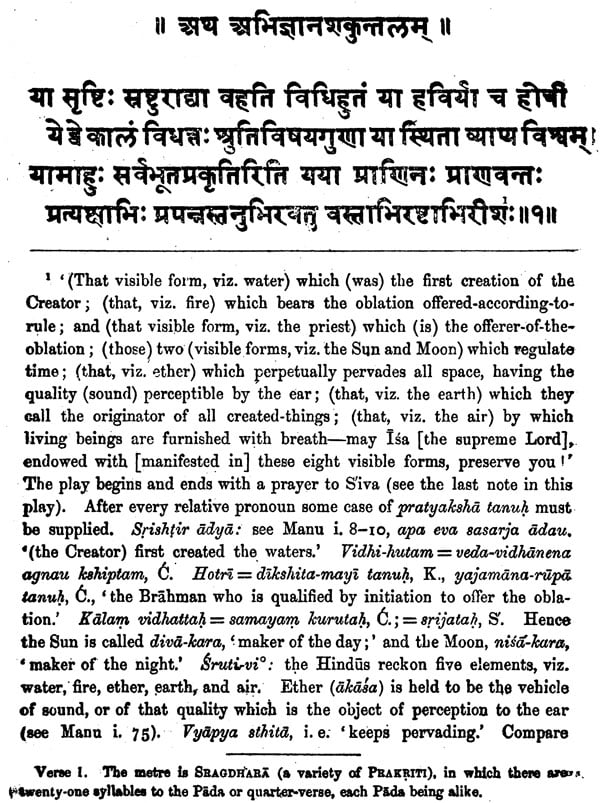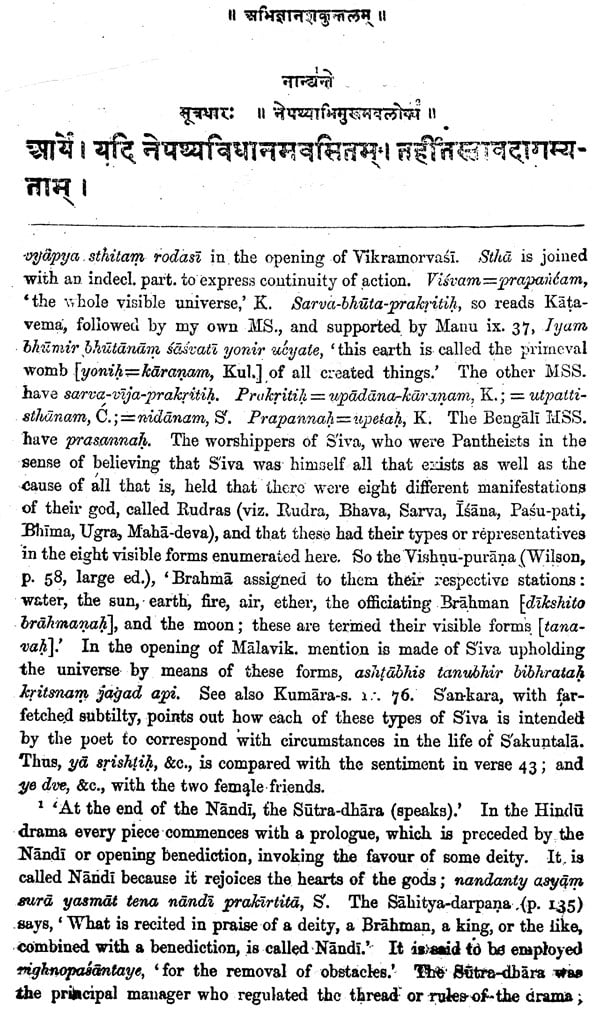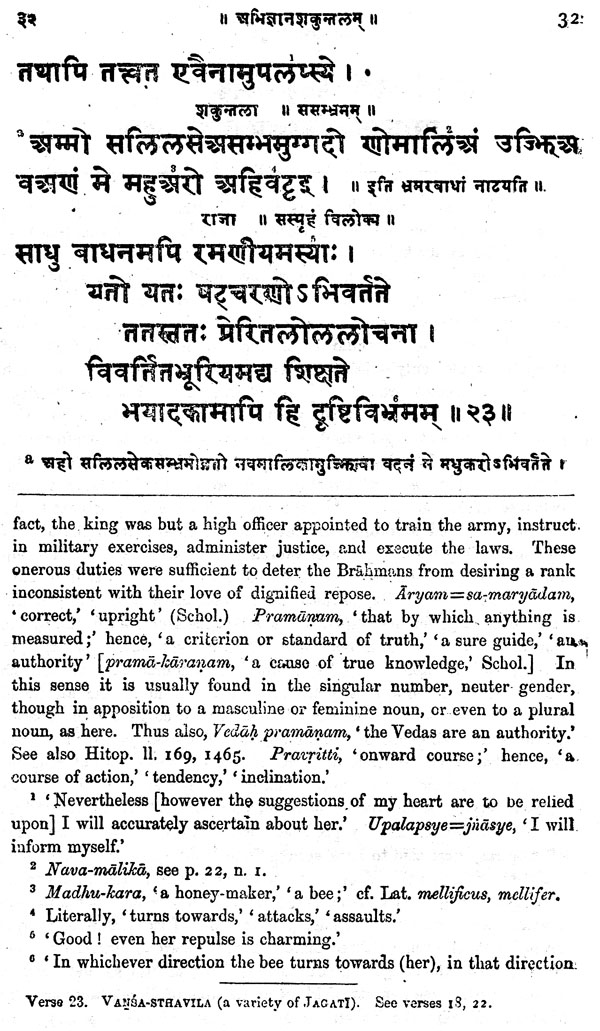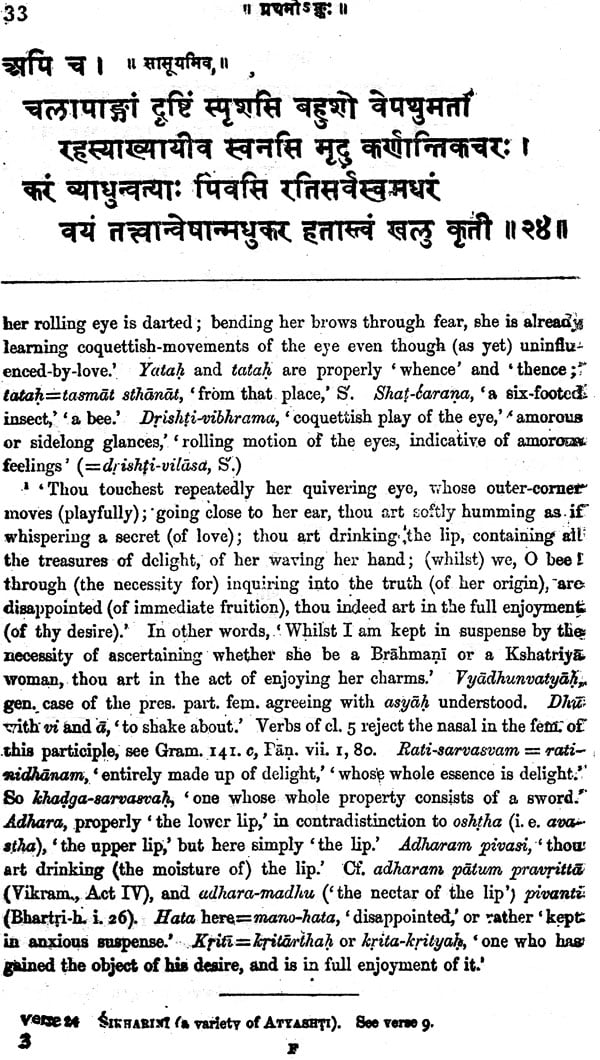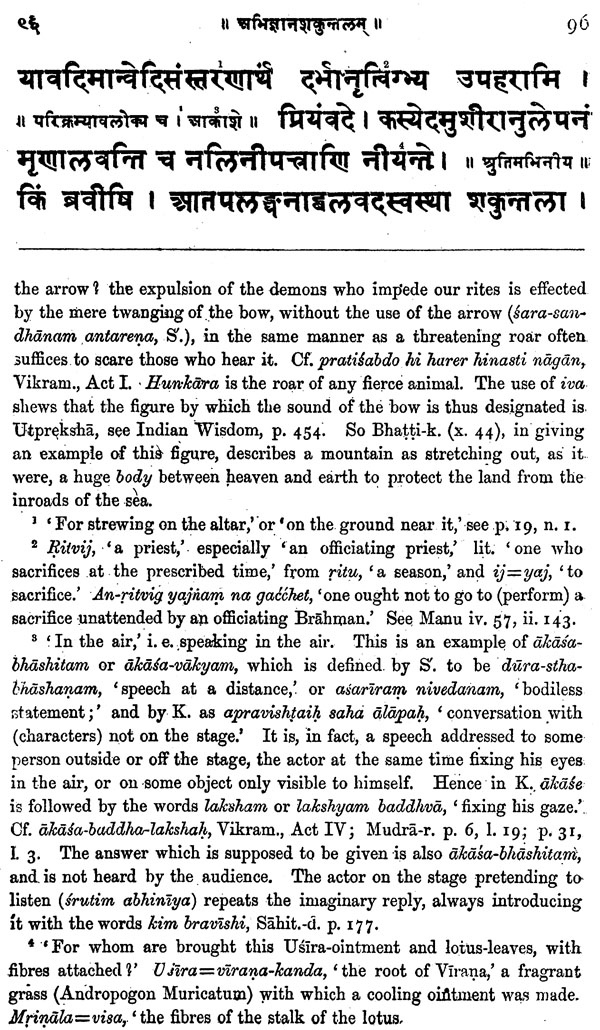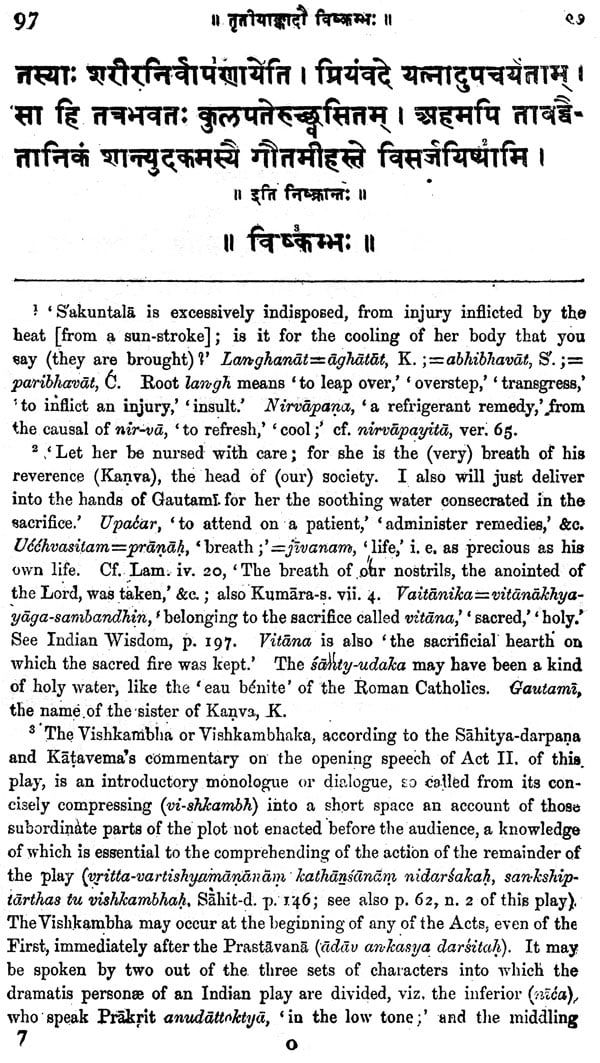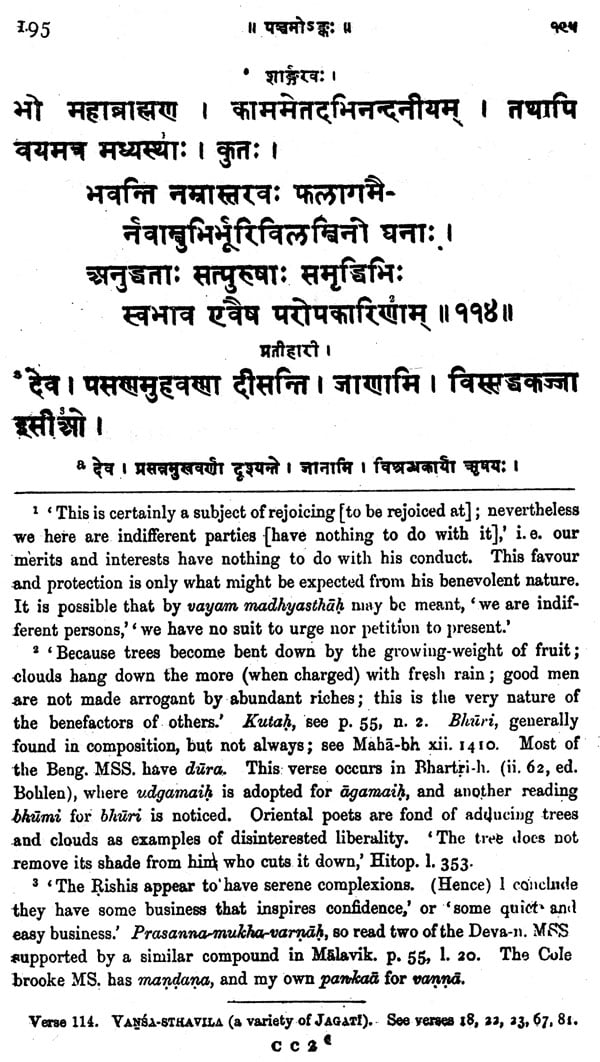
Sakuntala: A Sanskrit Drama, In Seven Acts (An Old and Rare Book)
Book Specification
| Item Code: | NAV166 |
| Author: | Kalidas |
| Publisher: | Chowkhamba Sanskrit Series Office |
| Language: | Sanskrit Text With English Translation |
| Edition: | 1999 |
| ISBN: | 8170800285 |
| Pages: | 400 |
| Cover: | HARDCOVER |
| Other Details | 8.50 X 5.50 inch |
| Weight | 410 gm |
Book Description
The following pages are the result of an endeavour to furnish English students of Sanskrit with a correct edition of the most celebrated drama of India's greatest dramatist. About a century has elapsed since Sir W. Jones di: covered that there existed in India a number of Natakas or Sanskrit dramas, many of them of great antiquity; some abounding in poetry of undoubted merit, and all of them containing valuable pictures of Hindu life and manners. Eager to apply the means thus gained of filling what was before an empty niche in the Temple of Sanskrit Literature, Sir W. Jones addressed himself at once to translate into English the Sakuntala, which he was told was the most admired of all the extant plays.
This work is by the illustrious Kalidasa, who is supposed by some native authorities (though on insufficient grounds) to have lived in Ujjayini, the capital of king Vikramaditya, whose reign is the starting-point of the Hindu era called Samvat, beginning 57 years B. C. Kalidasa is described as one of the 'nine gems' of that monarch's splendid court. It seems, however more probable that Kalidasa flourished in the third century of the Christian era ( see p. 474 of Indian Wisdom, published by W. H. Allen & Co., 13, Waterloo Place, London ). The Sakuntala is acknowledged on all hands to be the masterpiece of the great Indian poet. Indeed, no composition of Kalidasa displays more the richness and fertility of his poetical genius, the exuberance of his imagination, the warmth and play of his fancy, his profound knowledge of the human heart, his delicate,appreciation of its most refined and tender emotions, his familiarity with the workings and counter-workings of its conficting feelings,—in short, more entitles him to rank as 'the Shakespeare of India.' On the Continent such men as Goethe, Schlegel, and Humboldt have all expressed their admiration of the Hindu poet's greatest work. Goethe's four well-known lines, written in 1792, are—
'Willst du die Bluthe des fruhen, 'die Fruchte c'es spateren Jahres, Willst du was reizt und entzuckt, willst du was sattigt und nahrt, Willst du den Himmel, die Erde, mit einem Namen begreifen Nenn' ich Sakontala dich, and so ist '11les gesagt.1' Unfortunately the Pandits omitted to inform Sir W. Jones that the multiplication of manuscripts of this play, consequent upon its popularity, had led to a perplexing result,—not, however, unexampled, as has sin( e been proved by what has happened to the Ramayana,--namely, that the numerous manuscripts separated themselves into two classes the one, embracing all those in Devanagari writing, which, without being uniform, had still a community of char cter; the other, all those in Bengali.
Thus translated by Mr. E. B. Eastwick `Wouldst thou the young year's blossoms and the fruits of its decline, And all by which the soul is charmed, enraptured, feasted, fed, Wouldst thou the earth, and heaven itself in one sole name combine ? I name thee, O Sakuntala ! and all at once is said.' Augustus William von Schlegel, in his first Lecture on Dramatic Literal ure, says : 'Among the Indians, the people from whom perhaps all the cultivation of the human race has been-derived, plays were known long before they could have experienced' any forgien influence. It has lately been made known in Europe that they have a rich dramatic literature, which ascends back for more than two thousand years. The only specimen of their plays (Nataks) hitherto known to us is the delightful Sakontala, which, notwithstanding the colouring of a foreign climate, bears in its general structure a striking resemblance to our romantic drama.' Alexander von Humboldt, in treating of Indian poetry, observes : 'The name of Kalidasa has been frequently and early celebrated among the western nations. This great poet flourished at the splendid court of Vikramaditya, and was, therefore, con-temporary with Virgil and Horace. The English and German translations of the Sakuntala have excited the feeling of admiration which has been so amply bestowed upon Kalidasa. Tenderness in, the expression of feelings, and richness of creative fancy, have assigned to him his lofty place among the poets of all nations.' In another place he says : `Kalidasa is a masterly describer of the influence which Nature exercises upon the minds of lovers. The scene in the forest, which he introduced in- the drama of Vikrama: and Urvasi, is one of the most beautiful and poetical productions which has appeared in any time.'
These two classes of MSS. are usually distinguished by the names 'Deva-nagari recension' and 'Bengali recension', which terms may conveniently be adopted. The Deva-nagari recension is thought k y most scholars to be the older and purer. Many of the readings of the Bengali, however, have been defended by Dr. R. Pischel and others; and has been followed by the Sahitya-darpana, one MS. of which bears the date 1504 of our era. The MSS. of the Deva-nagari class are chiefly found in the. Upper Provinces of India, where the great demand has produced copyists without scholarship, who have faithfully transcribed what they did not understand, and, therefore, could not designedly alter. On the other hand, the copyists in Bengal have been. Pandits whose cacoethes for amplifying and interpotatin has led to much repetition and amplification. Many examples might here be adduced; but I will only refer to the third Act of the Bengali recension, where the love scene between the King and Sakuntala has been expanded to four or five times the length it occupies in the MSS. of the Deva-nagari recension. Even the names of the dramatis personae have been altered : Dushyanta is changed into Dushmanta; Anasuya into Anusuya; Vatayana into, Parvatayana; Sanumati into Misrakesi; Taralika into Pingalika;. D.hanamitra into Dhanavriddhi; Markandeya into ban-kocana. Unhappily it was a MS, of this recension, and not a very good specimen of its class, that Sir W. Jones used for his translation.
**Contents and Sample Pages**
